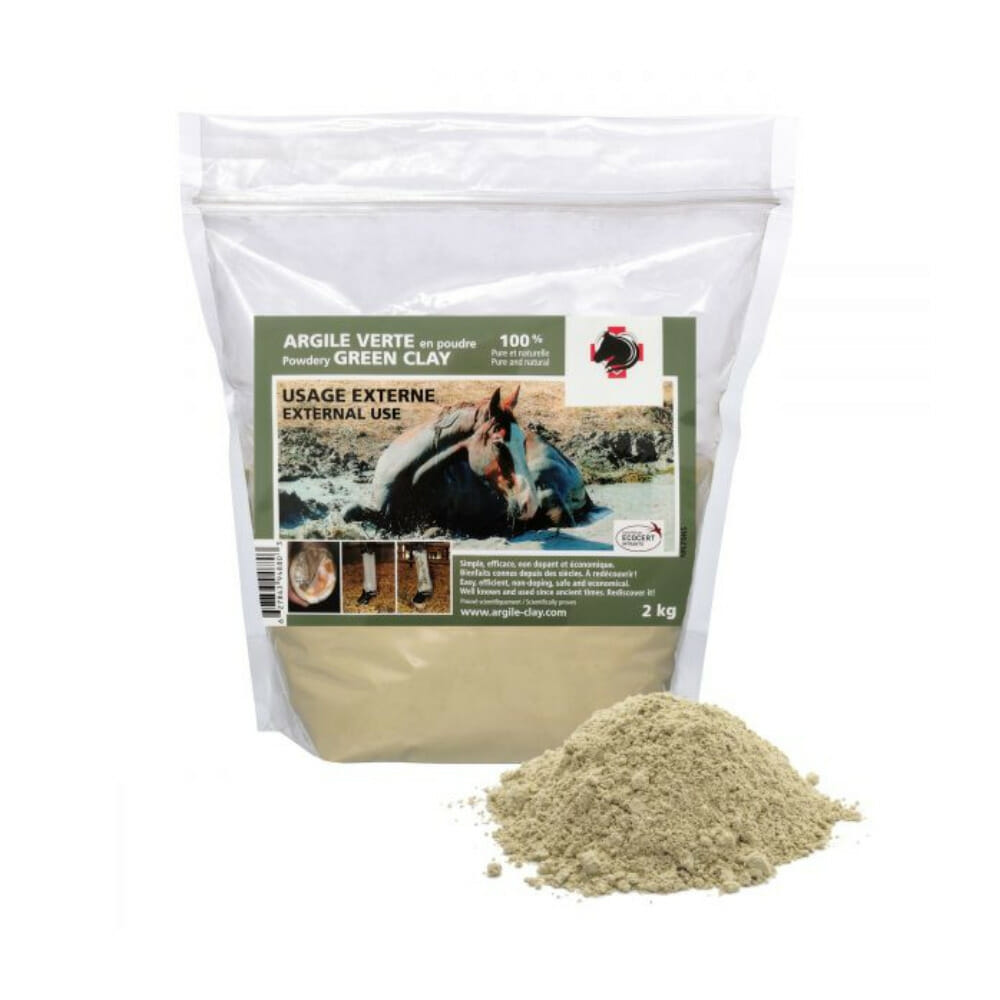External Green Clay
External Green Clay - 2 kg is backordered and will ship as soon as it is back in stock.
IMPORTANT: All health-related products are final sale and cannot be exchanged or refunded. For more information, visit our FAQ page.
Pickup available at La Chambrière - Boutique physique
Usually ready in 24 hours
Important: Due to size or weight, additional shipping charges may apply. Please visit our FAQ page for more information. Thank you for your understanding!
Instructions for use
Instructions for use
Save 10% by subscribing to our newsletter
Delivery & returns
Delivery & returns
Free & easy returns
You have 15 days to make your return request online following the date of your order. Visit our FAQ for our complete returns policy.
Holiday Returns Policy : Orders placed online between November 10 and December 24 can be returned until January 7 of the current year or 15 days following the shipping date, whichever is later. later
Delivery
Online orders take 2-3 days to be fulfilled
The free standard delivery offer is valid for orders placed on chambriere.ca with a minimum purchase value of $150 after discounts and before the application of taxes or any other associated fees. Offer cannot be applied to previous purchases. Additional restrictions may apply.
International addresses
NB: International delivery, outside of the United States and Canada, is temporarily unavailable. We hope to be able to ship worldwide again very soon
See our Ordering & Shipping FAQ for more information on pricing and delivery times.
Care
Care

External Green Clay - 2 kg is backordered and will ship as soon as it is back in stock.
External Route: Take the desired amount of clay in a NON-metallic dish, add water – generally 60 to 70% clay and about 30% water. Or choose the desired texture, stir with a wooden spatula to obtain a smooth paste (add clay or water as needed).
Clay begins to work when it comes into contact with water. As long as it is in powder form, it is inert and versatile since it has no additives.
PLASTERS OR PATAPLASMS
The difference between the two consists of placing the clay directly on the skin (against the grain) for a plaster whereas for a poultice, the clay is placed in a cloth (cheesecloth, flannel, cotton). If desired, but not essential, hold the poultice or plaster with a strip of cotton, wet paper towel or cabbage leaf.
For the limbs, apply a support bandage.
The clay works as long as it is damp. Discard the clay after use. Do not add a layer. Cellophane on clay : this method has the disadvantage of not letting the skin breathe, of keeping the heat inside when we often want to cool down. It is therefore no longer recommended. Risk of overheating – Possible allergies.
On a wound: apply the plaster directly to the wound. Once dry, gently remove as much as possible with lukewarm water (ideally) and reapply if necessary. Leave it on for about 2 hours or more depending on your schedule, but a maximum of 12 hours.
Replace the poultice twice a day or more as needed. Rinse with lukewarm water if possible, if there is any left it is not serious (a wound heals from the inside out), add clay paste. No danger of infection. Clay is antiseptic, antibacterial and antifungal.
No danger during lactation if the foal licks the clay on its mother.
Powdered clay can also help stop bleeding.
WARNING: In case of RISK OF FREEZING, only use powdered green clay to put it on the wound.
-
Format





